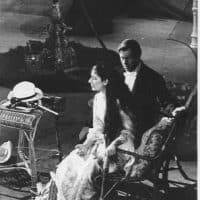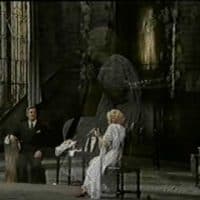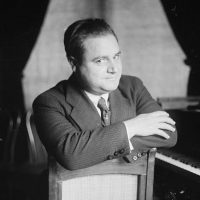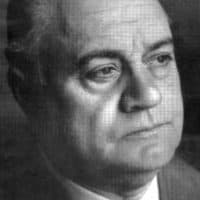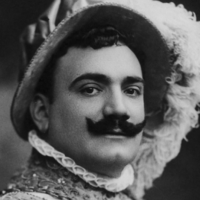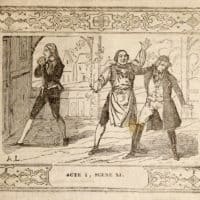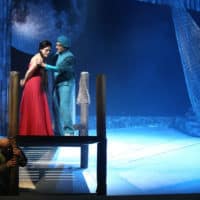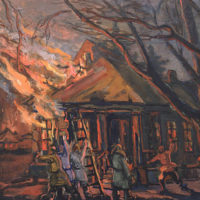There’s a saying in opera and musical theatre that the mezzos and altos get to play three types of roles: “witches, bitches, and britches”. While there are some exceptions, it’s a fairly accurate statement. The first two are certainly fun to play, but dearest to my heart are the “britches roles”, in which mezzos play young male characters. In very old repertoire, these roles were originally written for castrati and are sung by cross-dressed women now that chopping off parts of men for the sake of music has fallen out of fashion. However, in more recent repertoire (from about Mozart’s era onwards), many trousers roles were premiered by women. Composers thought that a high, light, sweet voice suited fiery young men… a stereotype that modern opera fans occasionally find confusing. (In contemporary life, we don’t generally associate a feminine build and voice with sword-carrying heroics or male romantic attractiveness.)
A lot could be said from a literary-philosophical perspective about gender in opera as it relates to trouser roles, and I hope and plan to say it at some time. This post, however, is a much less serious post devoted to cataloging a few of my favorite trouser roles for mezzos. (Yes, trouser roles for sopranos exist too, but I’ll exclude those from consideration for now.) Without further ado…
- Mozart’s La clemenza di Tito is rich in trouser roles: it contains two of my favorites. Sesto is a weak-willed friend of the emperor who has been seduced by his scheming girlfriend Vitellia into an assassination attempt. His nobler friend Annio pleads for mercy after Sesto botches the job and is arrested. Sesto’s aria “Parto, parto”, in which he tells Vitellia he will run to do whatever she wants as long as she favors him with a glance, is a classic mezzo showpiece, and Vasselina Kasarova owns it. Just below that, Annio’s “Tu fosti tradito”, his plea for mercy to the emperor, is a tricky aria delivered beautifully by Kate Lindsey.
- Handel’s Giulio Cesare is also a mezzo-fest: Both the title character and Sesto, son of the murdered Pompey, are frequently sung by cross-dressed women. Cesare’s aria “Va tacito” has revived in popularity recently, so I’ve included a video of Sarah Connolly’s masterful performance. Below that, Alice Coote shows great commitment and handles difficult choreography in Sesto’s “Svegliatevi nel core”.
- Perhaps the most famous trouser role is the foolish young Cherubino in Mozart’s Le nozze di Figaro. Cherubino is the epitome of a hormonal teenager–instantly in love with everything in a skirt and very melodramatic about his attachments. In “Non so più”, delivered here by the incomparable Frederica von Stade, he sings about how he is aroused by every woman he sees and wants to talk about love all the time.
- Prince Orlofsky in J. Strauss’s Die Fledermaus is exactly the person whose parties you want to go to. He’s rich and eccentric, and he believes in everyone having a good time and drinking themselves silly, even if he’s rather bored by life and partying himself. The mezzo playing Orlofsky only gets one aria, “Chacun à son goût”, but it’s a wonderfully fun aria in which he threatens to throw wine bottles at the head of guests who don’t drink at least as much as he does. The Twittersphere was rather disappointed that the new Met production of Die Fledermaus includes a countertenor rather than a mezzo as Orlofsky, but we’ve been somewhat consoled by the fact that Susan Graham is singing the role in Houston. I couldn’t find a recording of her singing Orlofsky’s aria, though, so here’s a heavily mustached Malena Ernman (with some crazy ornamentation).
- Confusingly, there are two men named Strauss who composed hit operas. The J. Strauss who wrote Die Fledermaus didn’t have the monopoly on fabulous trouser roles–Octavian in the other Strauss’s Der Rosenkavalier is one of the most beloved britches parts in all of opera. Octavian is the young lover of the (married) Marschallin. When he is asked to present the silver engagement rose to Sophie on behalf of Baron Ochs, the two young people fall in love. All ends happily when Ochs is defeated through his own boorishness and the Marchallin gracefully sacrifices her happiness to allow Octavian to pursue Sophie. In this video, 23-year-old Agnes Baltsa presents the rose to Janet Perry’s Sophie, and they sing a gorgeous duet.
For a further superficial look at fabulous cross-dressed mezzos, I highly recommend the blog whowearsthetrousers.tumblr.com. For a much more serious consideration of the question, check out Lydia Perovic’s essay on the topic here.
There are lots of great mezzo trouser roles I’ve had to omit to keep this blog post from getting absurdly long–Idamante in Mozart’s Idomeneo, Romeo in Bellini’s I Capuleti e i Montecchi, Siebel in Gounod’s Faust, Stephano in Gounod’s Roméo et Juliette, Nicklausse in Offenbach’s Les contes d’Hoffmann, Orsini in Verdi’s Lucrezia Borgia , Orfeo in Gluck’s Orfeo ed Euridice, and many, many more. What are your favorites and why?
